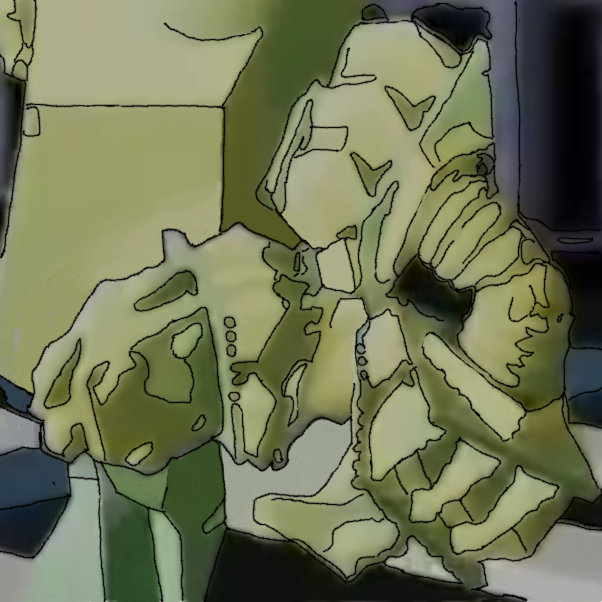
The audio can be heard on bandcamp.
Thanks to artist and musician Pierre-Luc Verville for including me as a topic on his website Le Parergon. The writing is in French; below is a machine-translated version. I added the hyperlinks for additional background.
Tom Moody
Tom Moody is an American musician, visual artist, and art critic. His work is characterized by the détournement [diversion, hijacking] of digital means of expression in order to subvert or sublimate their contradictions.
Biography
...Moody studied literature and art in Charlottesville [VA] and then in Washington, D.C., before moving to New York City...
Course of work
Banality and technical obsolescence are two important leitmotifs in Moody's work. Both embracing the limitations of the tools he uses and developing his art within the corporate world he infiltrates, he creates a body of work that can be said to explore the aesthetic and social ramifications of postmodern computing. His music explores the sonic aesthetics of the computer retroactively, as well as the aesthetic peculiarities of telecommunications and computer technologies and the social fantasies attached to them (Generic PC, 2017; Hypercylinder, 2019). In the visual arts, he is interested in optical effects, the dialectic between economy of means and maximalist aesthetics, and the changes brought about by new techniques in pictorial production (Kevin, Les, Steve, Kerry, oil on canvas, 1979-80; Advil Box, 1994, acrylic on promotional display box).
An aesthetic of the shift
From a technical point of view, Moody's art exploits the extreme limits, even paradoxes, of digital forms of expression. The audiovisual and minimal computer environment of the late 1990s (Microsoft Paintbrush and Paint, Windows 95 and 98, Sound Blaster, etc.) is reused by the artist in a way that subverts the corporate logic of the computer.
What is contradictory in the computer aesthetic is between what we expect from computer tools and what they do. Moody exploits this paradox by turning the fundamental elements of the perceptual system of computer environments into expressive elements that refer directly to the history of art. By exaggerating what the computer may or may not be expected to produce aesthetically, Moody reveals a world whose conditions of aesthetic possibility are constantly being transformed by the machine.
The appropriation of obsolete devices is thus the occasion for a critique of the obsolescence of the various aesthetic stages of the computer, for a re-reading of the horizon of expectation which frames the experience of it. In other words, his appropriation of computing is an art of the shift, which consists in shaping the contradictions of the aesthetic language of the cybersphere in order to question them [1].
References
1. Marc Augé, L'art du décalage, Multitudes, vol. 25, no 2, 2006, p. 139-147.

This drawing started as a collage of different sections of a spudoogle robot (an animated aggregation of 3D-rendered geometric solids). I wasn't satisfied with my cut-and-paste so I made an outlined version. Possibly this will be further modified with added colors, although these colors of spudoogle's are pretty great.